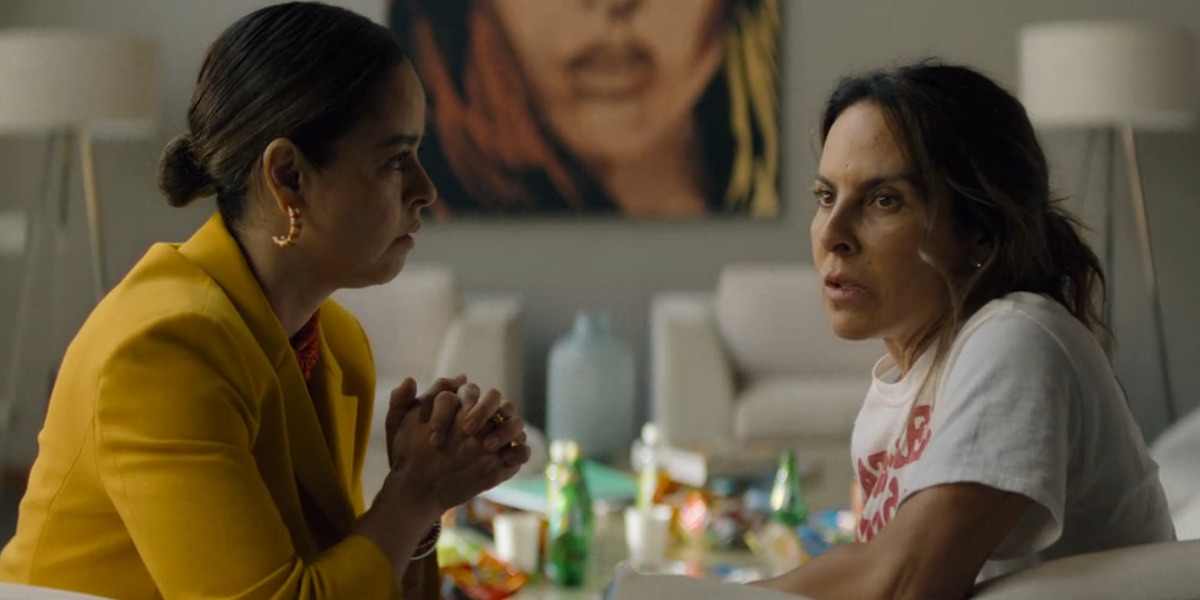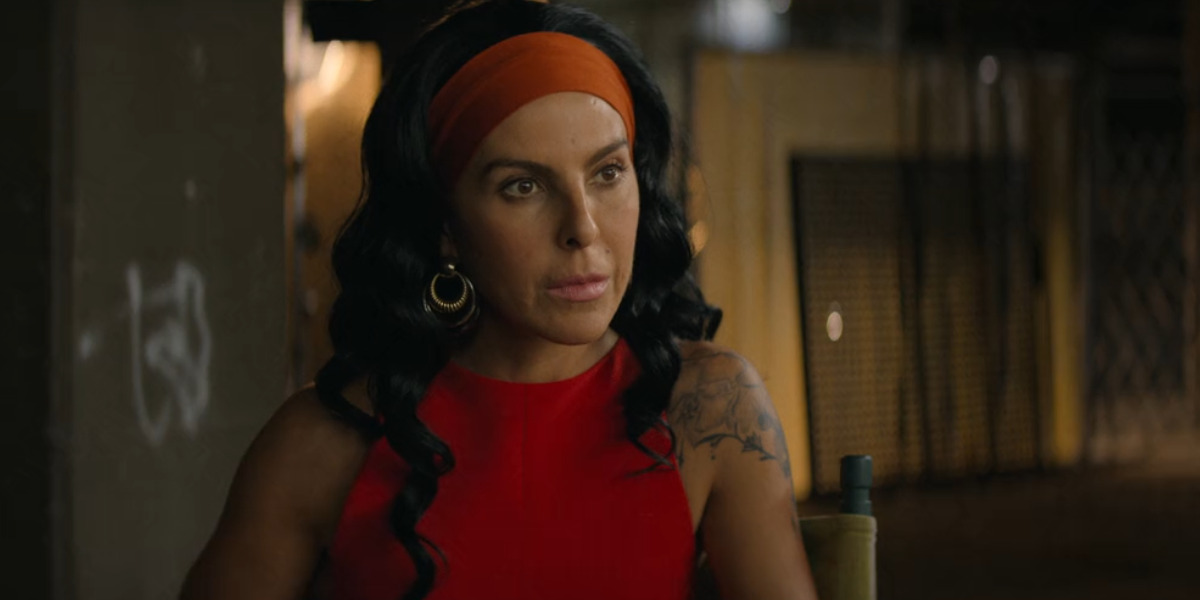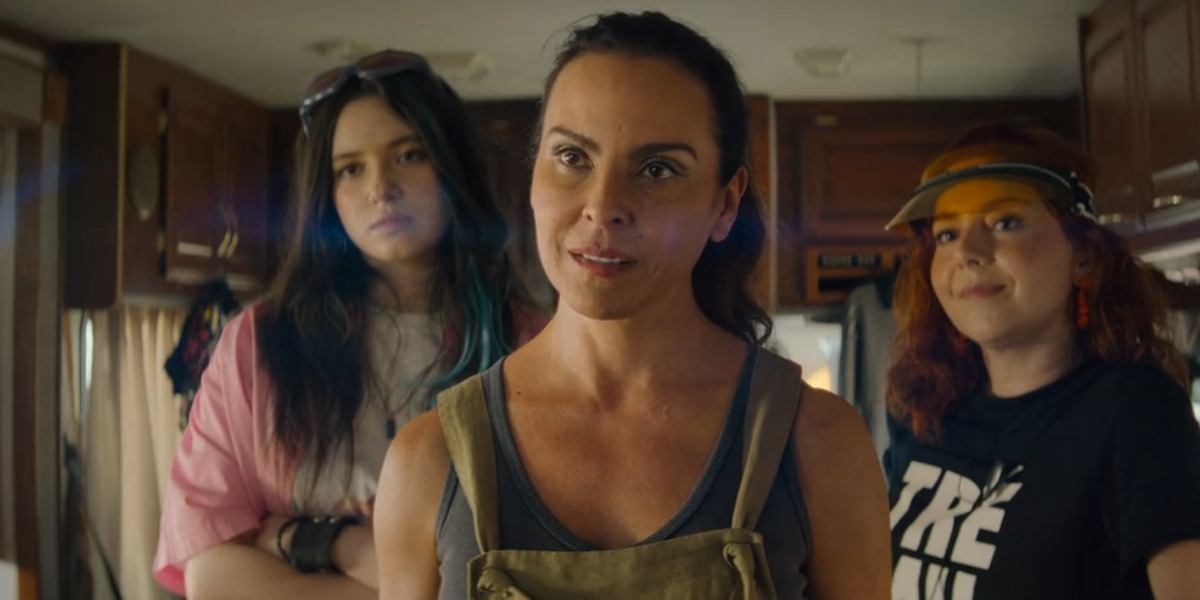‘The Biggest Fan’ is a Netflix Spanish comedy film which follows the story of a beloved actress whose career is in for a reckoning when she stumbles her way into one grave cancellable offense. Even forty years into her career, Lana Cruz thrives as a leading lady on her own long-running show. However, one chance encounter with a fan that leads to an unfortunate accident effectively results in the fall of her reputation. Consequently, when Lana gets the opportunity to bring her career back from the dead with an eccentric art house film, shot in Mexico, she jumps at the chance to revive her Hollywood fame.
Nonetheless, when her paths cross with Polly Melgar, her self-proclaimed biggest fan, things take a chaotic turn, sending her stardom toward a precarious edge. Although the Maria Torres film remains light-hearted and absurdist at times, it simultaneously presents a deep exploration of fame and success in the modern social media-driven culture. As a result, Lana’s character and her unique, yet relatable struggles as a “cancelled” artist remain the nucleus that grounds the story in reality.
The Biggest Fan Delves Into the Nuances of Cancel Culture
‘The Biggest Fan’ presents a comedy-heavy narrative about an actress who has recently fallen from grace. In the world of social media, all it takes is one misstep for her reputation to crumble in a way that is only fixable with the help of her most passionate supporter. This premise is unique to the film, retaining no direct inspirations from real life. As such, Maria Torres, the writer/director, and her co-writer, Enrique Vázquez, can be credited for the fictitious creation of the characters and their storylines. Nonetheless, despite an off-screen basis, the story maintains several ties to realistic and relatable aspects of the current pop culture around the relationship between celebrities and their fans.

The social phenomenon, first originating around 2016, revolves around the social ostracization and condemnation of individuals who have been deemed “problematic” or unethical by the public. From the beginning, social media has played a significant role in this practice as it allows the public to amplify their issues with certain individuals, projects, or companies and raise awareness about their perceived offenses. In recent years, cancel culture has become a particularly hot topic, scrutinized for its effectiveness in the wake of overexposure. Through Lana’s story, the film delves into a unique examination of this same phenomenon, particularly in a critical light. This is evidenced in the fact that the narrative employs the perspective of a celebrity whose actions are falsely taken at face value to fuel her downfall.
Through Lana’s character, the film naturally strives to humanize celebrities, even the disgraced ones, serving as a reminder that fame doesn’t absolve an individual of their identity, fears, insecurities, and the like. Even though the on-screen situation surrounding this storyline is fictional, some real-life instances can serve as a parallel to Lana’s accidental assault of a fan, which jump-starts the entire plot. In 2024, a controversy surrounded the famous rapper and K-pop Idol, Jessi. In September of the same year, one of her 18-year-old fans came forward with a story about being allegedly attacked after asking the artist for a photograph. These allegations resulted in a social media storm, compelling fans of the artist to speculate about he details of the incident.
Nonetheless, Jessi ultimately cleared the air, asserting that another partygoer had indeed attacked the fan after she turned him down for a photograph twice. However, she also explained that the attacker was not a friend or even an acquaintance of hers, and the incident left her equally shell-shocked. Later, the artist and her label reached out to the allegedly assaulted fan’s mother to work on a solution to the unjust situation. Even though the real-life instance is notably different than Lana’s on-screen narrative, it exists as a real-life example of how misunderstandings, amplified on social media, can have a negative effect on a celebrity’s life and career. Consequently, the base premise of the film, though without a basis in reality, offers a realistic viewpoint surrounding the topics of fame and cancel culture.
Lana Cruz’s Character Offers a Realistic Outlook on Celebrity Culture
Much like her fictional narrative surroundings, Lana Cruz also remains confined to the fictionality of ‘The Biggest Fan.’ However, as evident through the unconnected, yet comparable, parallel between her story and the real-life incident revolving around K-pop Idol Jessi, the character’s experiences are a reflection of reality. For instance, another similar case circled around Kim Delaney, an actress known for her role on beloved shows like ‘The O.C.,’ ‘Chicago Fire,’ and ‘NYPD Blue.’ In March of 2025, the actress was arrested at her Los Angeles home following an alleged domestic argument-turned-physical altercation.

Delaney was arrested on the charge of felony assault with a deadly weapon. Simultaneously, her partner, James Morgan, was also arrested for misdemeanor domestic violence. Nevertheless, in the end, these charges were never filed due to insufficient evidence. Ultimately, the legal case was dismissed, and the couple went back to their regular lives together. Yet, the incident lingered in the public conscience, often inviting speculation and analysis from the actress’s fans on her social media accounts. Much like Jessi’s story, Delaney’s experiences also only serve as a parallel to Lana’s on-screen narrative, without any concrete connection between the two.
Still, it adds a level of real-life context to the fictional character’s sense of realism. Similarly, other storylines add authenticity to Lana and her storyline. Her relationship with her controlling mother, who pushed her into becoming a child star and shaped her psyche around fame, in particular, shines a light on the reality of child stardom in Hollywood. On the other hand, Kate del Castillo, the actress behind Lana, also sports a thematic link to her character, which adds another level of nuance to the latter. In her decades-long career in the film industry, Del Castillo has also faced scrutiny and criticisms for things that happened in her personal life. For the same reason, she was able to relate to her character in a unique way, which inevitably contributes toward the authenticity behind Lana’s otherwise fictitious experiences.
Read More: The Biggest Fan Ending Explained: Does Lana Save Her Career?


